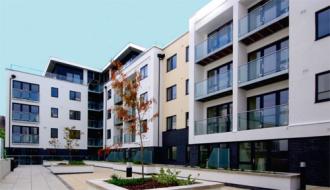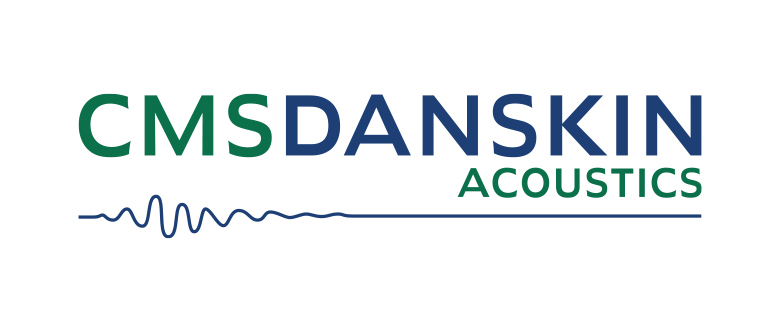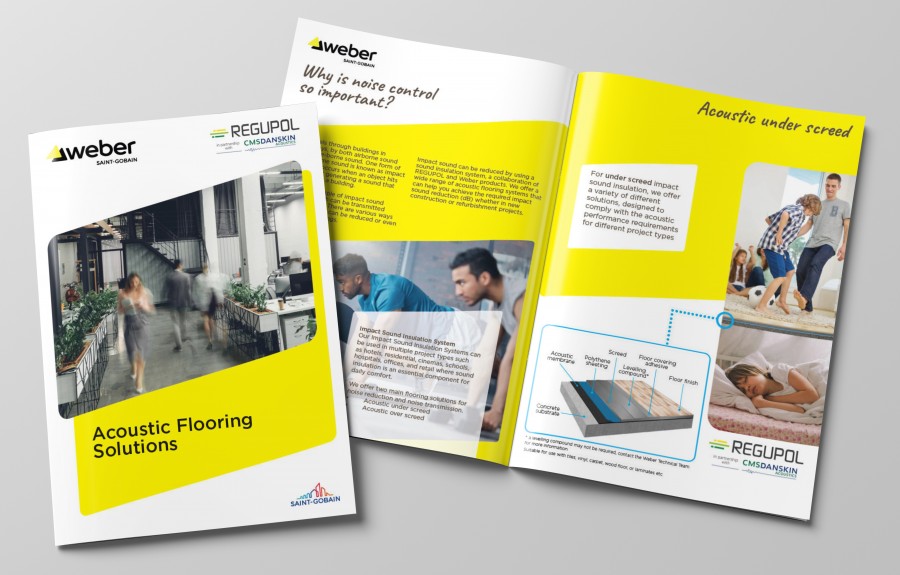he acoustic performance of CMS Danskin’s products is assured, meeting and often exceeding Part E’s acoustic insulation requirements of 45dB or greater for airborne noise (43dB for refurbishments) and 62dB or less for impact noise (64dB for refurbishments). But Part E is only one of a number of considerations.
For Oak Tree Developments’ West Yorkshire apartment project, Regupol E48 was specified because it was the only underscreed treatment for beam and block floors with RD approval, the client favouring the RD route to project completion. Regupol 6010XHT acoustic isolating strips were added to prevent flanking sound transmission by isolating the internal blockwork and perimeter construction from the structural steelwork.
Annona Developments’ conversion of St Paul’s Church in Wigan to luxury apartments called for Regupol 4515 because the client wanted aesthetic flexibility when it came to the final floor finishes. Regupol 4515 is compatible with ceramic tiles, vinyl, wood, laminates, carpet and linoleum. Regupol 4515 also has a shallow depth (just 4.5mm) and in a development where a new third floor was to be incorporated into the design, reducing construction height was crucial. In fact, Regupol 4515 is also available in a 3mm thickness.
For Telford Homes’ Vellum Development in Walthamstow, Regupol 7210C was specified because, with over 200 apartments to soundproof, a Part E compliant material was needed that was quick and easy to install. Regupol 7210C comes in easy-to-handle sheets, does not require separate perimeter strips or any fixing prior to the casting of the screed.
There are other, non-project-specific requirements to consider. For example, what about sustainability? The Code for Sustainable Homes requires that all products be responsibly sourced, so ensure your acoustic flooring is playing its part. You should, where possible, be sourcing products that are made from recycled materials and are 100% recyclable, zero GWP (Global Warming Potential) and zero OPD (Ozone Depletion Potential). It’s no good specifying a Part E compliant material if it fails to meet the good practice guidance for selecting “environmentally preferable materials”.
Technical Director of CMS Danskin, Paul Absolon, said, “Each project has its own unique challenges. Although meeting the requirements of Part E is the destination, there are any number of routes for getting there, because the client doesn’t just want to satisfy Part E. That’s why CMS Danskin approach every job with a fresh perspective and offer a broad palette of specialist products.”
CMS Danskin’s ability to flexibly and efficiently meet the demands of Part E looks set to increase, as they prepare to move into a new 34,000 sq. ft. facility in June. Optimised for manufacturing extra stock-holding, the new offices are geographically central in a congestionfree area, maximising logistical efficiency.










